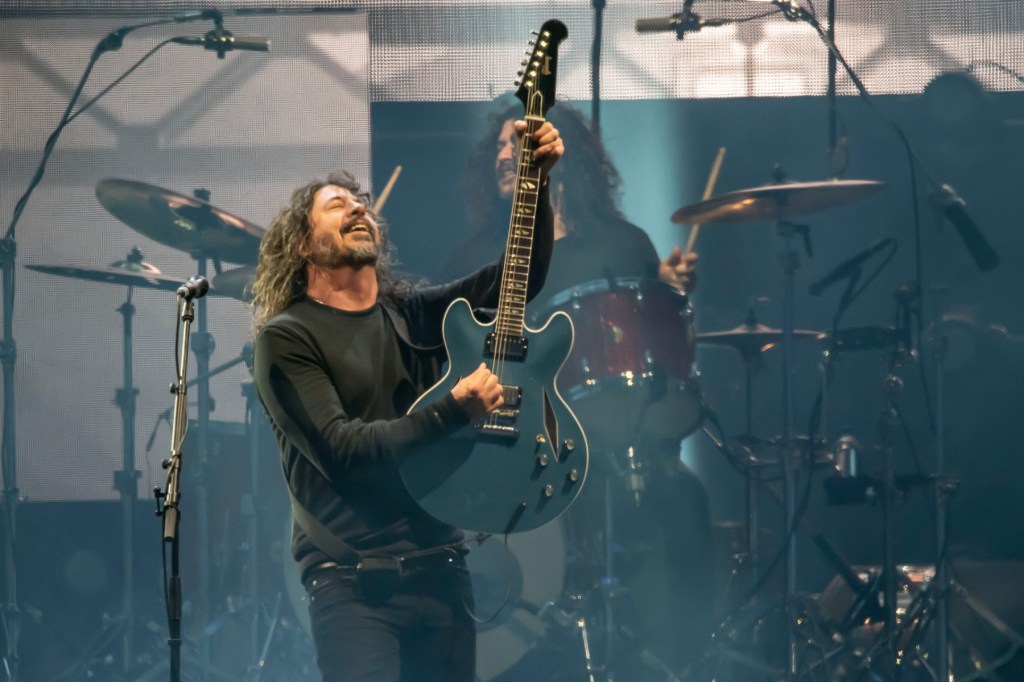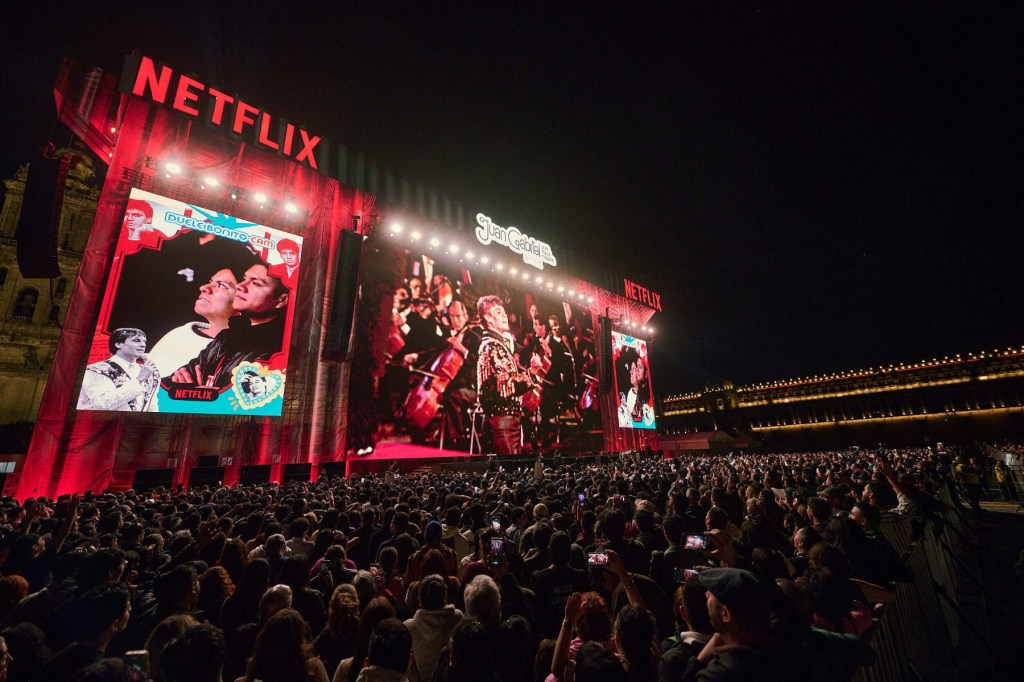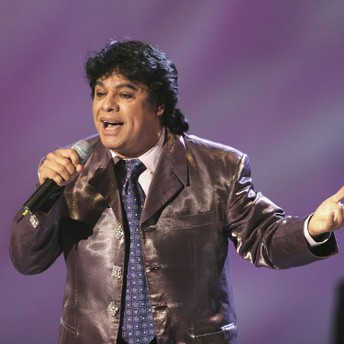MEXICO
Trending on Billboard
The Coca Cola Flow Fest, the biggest reggaetón party celebrating Latin urban music, held its 2025 edition this weekend (Nov. 22 and 23) in Mexico with a powerful lineup that brought together legends of the scene and young stars, from Don Omar, Wisin y J Balvin a Young Miko, Álvaro Díaz and Myke Towers.
Nicky Jam, Lenny Tavárez, Omar Courtz, Bad Gyal, De La Ghetto, Sech, De La Rose, Yailin La Más Viral, Jowell & Randy, El Alfa, Andy Rivera, Easykid, Sayuri & Sopholov, Daaz, Katteyes, Mexican rap star Santa Fe Klan, and the queen of Mexican reggaetón Bellakath were also part of the dazzling lineup for the eighth edition of the festival, held annually at the Autódromo Hermanos Rodríguez, home of the F1 in Mexico City.
Likewise, the popular event brought regional Mexican superstar Natanael Cano with the full power of his corridos tumbados as one of the main acts, marking a precedent in the festival for a genre outside of urban music.
Great guests lit up the five stages of the festival, including Colombian icon Carlos Vives, who headlined one of the acts on the Sessions Stage and later reappeared during Wisin’s set to perform “Nota de Amor” together. Mexican star El Malilla fired up the stage alongside DJ Chaka, and on Sunday, joined his Mexican friends with J Balvin during the closing performance. The event also brought some exclusives, such as the announcement of Álvaro Díaz’s new album, OMAKASE, set for release in 2026, which the artist revealed at the end of his performance on Saturday.
In total, the Flow Fest 2025 gathered approximately 163,000 people over its two days — 79,000 on Saturday and 84,000 on Sunday — according to the promoter Ocesa. Here are the 10 best moments from the Coca Cola Flow Fest 2025, ranked all the way down to our favorite.
Cachirula & Loojan

Trending on Billboard
Carlos Vives brought all his energy and the joyful vallenato to the 2025 Coca-Cola Flow Fest in Mexico City on Saturday (Nov. 22), surprising his fans with a tribute to the legendary ranchera singer-songwriter José Alfredo Jiménez.
“It’s a joy to see you, and I want to tell you something that goes like this,” said the Colombian icon from the Sessions Stage before performing an a cappella version of “Para Morir Iguales” by Jiménez, prompting an ovation at the festival — which on its first day gathered 79,000 people at the Autódromo Hermanos Rodríguez, according to figures from promoter Ocesa. (Watch Vives’ a capella performance in a video captured from the show that was shared on X here.)
“Long live José Alfredo Jiménez! Thank you, Mexico!” he added, after making the crowd dance to a handful of songs that included “La Bicicleta,” his 2016 hit with Shakira that topped Billboard’s Latin Airplay chart for six weeks.
The 64-year-old artist had not been included in the festival’s original lineup, but on Thursday (Nov. 20), organizers announced that the alternative Sessions Stage would feature surprise musical acts, including Vives and Colombian band Bacilos.
“This is a cumbia, Mexico. What unites Colombians and Mexicans, what we have in our blood, is a race,” Vives added before performing “Para Robarte Un Beso.”
Later that evening, the Santa Marta native reappeared during Wisin’s set on the main stage to join his voice with the Puerto Rican star’s on “Nota de Amor,” a celebrated fusion of vallenato and reggaeton included on Wisin’s album Los Vaqueros: La Trilogía (2015), which originally also featured Daddy Yankee.
Considered the largest Latin urban music festival, the Coca-Cola Flow Fest brought some of the biggest stars of the genre to its five stages at the Autódromo Hermanos Rodríguez on its first day. Don Omar, Myke Towers, Nicky Jam, Álvaro Díaz, Santa Fe Klan, De La Rose, El Alfa and Jowell & Randy were among the acts that shone in a celebration that extended into the wee hours.
The festival continues Sunday with performances by J Balvin, Young Miko, De La Ghetto, Farruko, Bellakath and Mau y Ricky, as well as a special performance by corridos tumbados superstar Natanael Cano, among others.
The third day of the Corona Capital 2025 festival on Sunday (Nov. 16) delivered an epic finale to Linkin Park’s From Zero World Tour 2025, with the alternative rock band paying tribute to Mexico by rocking lucha libre masks. It also marked the long-awaited and powerful return of Deftones to the Mexico City stage after nearly […]
Trending on Billboard
Pop star Chappell Roan turned to Duolingo to surprise her fans with some Spanish during her debut in Mexico on Saturday (Nov. 15) night at the Corona Capital festival.
“¡Hola, buenas noches! Me llamo Chappell Roan,” said the singer-songwriter to the 75,000 people (according to promoter Ocesa’s figures) gathered around the main stage at the Autódromo Hermanos Rodríguez in Mexico City. “Are you ready to get ‘Naked in Manhattan?’” she added in English, referencing her song of the same name.
It was the prelude to a grand celebration filled with the dance and synth-pop hits that have made the young singer one of the most celebrated stars today.
Later, seated on a giant throne while holding a gremlin-shaped toy, she revealed more about her attempts to learn the language. “I’m on day 55 of my Duolingo for Spanish, and I practiced saying that sentence in Spanish, and I’m too embarrassed to try and speak it,” she said shyly before performing “Coffee.”
Hundreds of fans responded by chanting “¡Sí se puede!” (Yes, we can!) in unison to try to encourage her. “Chappell, sister, you’re already Mexican!” shouted another group of supporters to applaud her effort, also in Spanish.
On several occasions, Roan interacted with the audience that eagerly awaited her during the marathon day of the musical feast, which also marked the 2025 closing of her Visions of Damsels & Other Dangerous Things Tour, a title that is reflected in her fairytale gothic aesthetic.
“I was really nervous to play this show because I’ve never played in Mexico before,” she confessed. “I wasn’t sure, honestly, what the turn out was gonna be, so I’m glad, thank you for showing up, and this is so awesome!”
Throughout the performance, the singer was literally the queen of a castle that filled the stage. Her often theatrical performance reached a surreal climax when the 27-year-old artist also paid homage to the famous Mexican celebration of Día de Muertos (Day of the Dead), which is held on Nov. 1 and 2 to honor deceased loved ones.
“I wanted to be a screaming banshee, and so I was like, Il’l be scary cause I feel like Mexico City can handle it,” the artists said. “I literally think this is the only place that can handle me looking like this,” she added about her outfit: a bridal gown with veils and lace, her mouth and teeth stained red to simulate blood. (Banshees are female spirits from Irish folklore, described as messengers of death whose wailing or screaming announces the passing of a close relative.)
An enthusiastic audience sang along to every word of her hits, from “Pink Pony Club” to “Good Luck, Babe.” Even the unreleased single “The Subway” and her cover of Heart’s “Barracuda” were a resounding success. The emotion conveyed by the 2025 Grammy winner for best new artist brought tears to the eyes of many of her fans, who expressed their gratitude for her visit. Roan is set to visit other Latin American countries in 2026 when she participates in the Lollapalooza festivals in Chile, Argentina and Brazil.
The second day of activities at the Corona Capital festival also included performances by acts such as Vampire Weekend, Aurora, Marina, Mogwai, Alabama Shakes, Jehnny Beth, Haute & Freddy y Half-Alive. Italian star Damiano David canceled his participation last minute due to health reasons, according to a statement released on his social media.
The program was set to continue on Sunday with Linkin Park, the much-anticipated return of Deftones to Mexico, James, AFI, Weezer, Jerry Cantrell, TV on the Radio, and more.

Trending on Billboard
The first day of the 2025 Corona Capital festival took place on Friday (Nov. 14), marking the grand return of Foo Fighters to Mexico City after a three-year absence. The explosive and unforgettable performance turned into a celebration filled with hits from Dave Grohl’s rock band’s 30-year career.
On day one, the musical feast — which is celebrating its 15th edition — was filled with 1990s nostalgia but also showcased new talents from genres like indie, soul, electro-pop, and folk. It drew over 78,000 attendees (according to promoter Ocesa) who enjoyed performances by Queens of the Stone Age, Franz Ferdinand, Garbage, Kaiser Chiefs, 4 Non Blondes, Jet, Lucy Dacus, Bad Bad Hats, Debby Friday, and other acts. The audience, demanding yet warm, kept the energy and good vibes throughout the day, which stretched into the early hours of Saturday at the Curva 4, the Formula 1 venue in Mexico City.
One of the surprises this year was the performance by veteran band 4 Non Blondes, who won over both old and new fans following the viral trend of the Nicki Minaj mash-up “Beez in the Trap” fused with “What’s Up?” The new song has been used in hundreds of thousands of TikTok videos and brought the ’90s anthem, written by singer-songwriter Linda Perry, back onto the Billboard Hot Rock & Alternative Songs chart.
The program continues on Saturday (Nov. 15) with performances by U.S. star Chappell Roan, whose appearance at Corona Capital marks her debut on Mexican stages, as well as shows by Vampire Weekend, Damiano David, Aurora, Mogwai, Alabama Shakes, Jehnny Beth, Haute & Freddy, Half-Alive, and more.
Find out which were our favorite five acts from the first day of the 2025 Corona Capital festival below.
Foo Fighters, the Best of the Best
Trending on Billboard
The legacy of iconic Mexican singer-songwriter Juan Gabriel was celebrated in an unprecedented and massive event that brought together 170,000 people on Saturday (Nov. 8) night at Mexico City’s Zócalo, according to figures from the capital’s government. Fans gathered to watch the screening of the first concert the late “Divo de Juárez” performed at the Palacio de Bellas Artes in 1990.
This marked the second time that one of the three concerts the legendary artist held at Bellas Artes during his career was screened in the country’s main public square. A similar event held in September 2024, when a projection of his 2013 performance at Mexico’s premier cultural venue, drew 70,000 fans.
Saturday’s screening set a new global attendance record for an in-person fan event organized by Netflix, according to the streaming platform, which partnered with the capital’s Secretariat of Culture to host it at the same public space where, 25 years earlier, the legendary artist held a free concert for thousands of fans.
The screening of Juan Gabriel’s debut performance at Bellas Artes was part of Netflix’s promotion for its new docuseries Juan Gabriel: I Must, I Can, I Will (Juan Gabriel: Debo, Puedo y Quiero), which premiered on Oct. 30.
The event, which at times felt like an actual concert due to the audience’s enthusiasm, became a journey back in time to revisit the historic performance of the singer, which took place 35 years ago and sparked controversy due to his desire to perform at Mexico’s most prestigious cultural venue as a popular artist.
From early hours, fans of all ages and from all corners of Mexico, Juan Gabriel impersonators, and special guests gathered in the Zócalo — or Plaza de la Constitución — with posters, T-shirts, and outfits inspired by the legend. The artist’s son, Iván Aguilera, was also present to celebrate his father’s legacy, as well as the docuseries director María José Cuevas and producers Laura Woldenberg and Ivonne Gutiérrez, who also sang and danced alongside the attendees.
José Luis Flores, a man in his 40s from the neighboring State of Mexico, proudly displayed a tattoo on his chest featuring the late singer’s image. “I waited for him for more than four hours after a concert — this is my greatest treasure,” the man told Billboard Español.
Classic hits from Juanga’s discography, such as “Hasta Que Te Conocí,” “Querida,” “Amor Eterno,” and “Por Qué Me Haces Llorar,” moved the audience to tears, creating an intimate and nostalgic atmosphere. After the screening, the Mariachi Estrella de América performed on stage a setlist of Juan Gabriel’s hits, followed by a fireworks display that lit up every corner of the square, honoring the life, talent, and music of the Mexican singer-songwriter. Juan Gabriel died on August 28, 2016, at his home in Santa Monica, Calif., of natural causes, in the middle of a concert tour. He was 66.
Inducted into the Billboard Hall of Fame in 1996, he built a legacy as a multifaceted artist over more than four decades, recording songs in genres as diverse as ranchera, ballad, pop, and bolero, and producing for other artists. Among his many achievements, he sold over 150 million records, wrote more than 1,800 songs, released 34 studio albums, was nominated for six Grammy Awards, won three posthumous Latin Grammys, and saw more than 20 of his hits reach the top 10 on the Billboard charts, including seven No. 1s on Hot Latin Songs. His hit “Yo No Sé Qué Me Pasó” inaugurated the first edition of that chart in 1986, at No. 1.

Trending on Billboard
Rauw Alejandro turned his acclaimed Cosa Nuestra Tour into a heartfelt tribute to Mexico and its most famous festivity, Día de Muertos (Day of the Dead), on Tuesday night when the Puerto Rican star, his dancers and musicians all appeared with their faces painted as Mexican skulls for the first of five shows at the Palacio de los Deportes in the capital city.
In a stunning surprise for the 18,000 attendees who packed the venue, according to Ocesa figures, Rauw, elegantly dressed in a 1960s-inspired outfit, resembled the character El Catrín — the eternal lover of La Catrina, the legendary skull created by Mexican cartoonist José Guadalupe Posada, who in Mexican tradition is her eternal companion in celebration on life and death.
“I’m singing here in one of my favorite cities,” Rauw said with emotion to the crowd, who erupted in a warm ovation. “Today’s story is a little different, when two cultures become one, when Cosa Nuestra meets Mexico with lots of love and affection, with great respect for everyone.”
The fact that the dancers and musicians accompanying the artist also appeared with their faces painted as Mexican skulls made the experience even more emotional and intimate for his local fans, who, adhering to the singer’s dress code, wore short sequined dresses, feathers, berets, and classic-cut suits.
Día de Muertos is traditionally celebrated on Nov. 1-2. Over the weekend, the performer had shared a series of snapshots on his Instagram account, where he and his team appeared with their faces painted as a skulls enjoying traditional tacos and tequila in Mexico, where he has 10 fully sold-out shows scheduled.
The Mexican leg of his Cosa Nuestra World Tour began on Nov. 2 in the northern city of Monterrey and continues in Mexico City with five shows, from Nov. 4 to 9. He will also stop in the city of Guadalajara on Nov. 15 and 16.
Rauw Alejandro participated on Monday (Nov. 3) in the Billboard Live Music Summit 2025 in Los Angeles, where he spoke with Billboard’s Leila Cobo and Hans Schafer, senior vp of global touring at Live Nation, about how his partnership with the entertainment giant helped him create a Broadway-inspired show that could “travel the world.”
The Cosa Nuestra tour is a high-concept, 1970s New York-inspired spectacle supporting Rauw’s 2024 album of the same name, which hit No. 6 on the Billboard 200. The tour grossed $91.7 million across spring and summer legs in North America and Europe before heading to South America and Mexico. The trek will conclude at the end of this month with a five-date residency at San Juan’s Coliseo de Puerto Rico José Miguel Agrelot.
Trending on Billboard
Spanish superstar Rosalía returned this week to Mexico City, where she attended a listening session for her new album LUX on Wednesday night (Oct. 29) with a lucky group of fans. Her visit turned into an entire culinary experience featuring popular Mexican dishes and a night of partying alongside her friends, the members of Mexican band Latin Mafia.
Rosalía shared the trip with her millions of followers on TikTok Live, showing her and her friends riding in a limousine through the streets of Mexico’s capital before arriving at a branch of a famous pozole restaurant chain. There, she tasted the popular dish for the first time — a broth made with corn kernels, chicken or pork, chili and topped with lettuce. She also enjoyed some enfrijoladas, tortillas dipped in bean sauce and filled with shredded chicken.
“First time eating pozole, guys,” Rosalía says in a video that has gone viral in Mexico since Thursday. “It’s tricky — it’s spicy,” she adds, pulling the classic faces one makes when eating spicy food. Videos of diners who were surprised to see the singer at one of the restaurant chain’s locations have also gone viral.
The “Motomami” singer’s night out in Mexico also included a stop at a Mexican cantina, where she and Latin Mafia enjoyed some drinks and watched drag performances with numbers dedicated to Juan Gabriel and Jenni Rivera.
The Spanish superstar also received a special gift: a necklace with a pendant of the iconic Virgin of Guadalupe, the Patron Saint of Mexico and Latin America, which was given to her by one of the members of the pop trio. The night was sealed with a tattoo that Rosalía herself gave to Milton de la Rosa, one of the singers of Latin Mafia, featuring the title of her new album, LUX.
The artist was in Mexico as part of the worldwide listening parties for LUX, her highly anticipated fourth studio album, to be released on Nov. 7. According to her, the LP is “inspired by holy women from around the world.” The first single, “Berghain,” a cutting-edge track featuring Björk and Yves Tumor, was released on Oct. 27. Watch it below:
Trending on Billboard
When Juan Gabriel released his debut album El Alma Joven (1971) — which included the hit “No Tengo Dinero” — and received his first paycheck, the iconic Mexican singer-songwriter bought a house for his mother and gifted himself a Super 8 camera to meticulously document his life on and off stage. Years later, that vast video archive became the foundation for a documentary narrated in his own voice.
Explore
See latest videos, charts and news
In Juan Gabriel: I Must, I Can, I Will (Juan Gabriel: Debo, Puedo y Quiero), a four-episode docuseries available on Netflix starting Thursday (Oct. 30), the artists also known as the “Divo de Juárez” is showcased like his audience has never seen before: through his own lens and from his intimate perspective. This was made possible thanks to access granted to documentary filmmaker María José Cuevas to hundreds of tapes recorded by the artist himself from the 1970s until shortly before his death in August 2016.
“What makes this project unique is being immersed in the two personas: the private and the public figure,” Cuevas tells Billboard Español in an interview in Mexico City. “Juan Gabriel was music. Alberto Aguilera Valadez (his real name) was his pause.”
Cuevas explains that she relied on hundreds of home videos, concert recordings, family scenes, and intimate moments that had been stored in a warehouse for over 40 years. But the sheer volume of material — “all filmed by him and for him,” she emphasizes — became the project’s main challenge for the filmmaker, producers Laura Woldenberg and Ivonne Gutiérrez, and their team.
“Any cassette could hold a gem. There were tapes in 8 mm format, VHS, everything,” Gutiérrez recounts. “We had thousands of photos, many audio and video files, but the story was crafted by Juan Gabriel with the recordings he left behind.”
The series title comes from a newspaper headline after his first concert at the iconic Palacio de Bellas Artes in 1990, a performance that sparked great controversy due to criticism of his desire to perform at Mexico’s most prestigious cultural venue as a popular artist. This chapter in the great singer-songwriter’s life is one of the most symbolic moments in the documentary. The phrase is also included in his song “Debo Hacerlo.”
Juan Gabriel in Juan Gabriel: I Must, I Can, I Will
Netflix
That very first concert in 1990 — one of three Juan Gabriel performed at the Palacio de Bellas Artes throughout his career — will be screened at the Zócalo in Mexico City, the country’s main public square, on Nov. 8 as part of the promotion for Juan Gabriel: I Must, I Can, I Will. Thousands of attendees are expected, much like in Sept. 2024, when a projection of his 2013 show drew 70,000 people.
For Cuevas, who also directed the 2016 documentary Bellas de Noche, about legendary Mexican vedettes, the incredible aspect of Juanga’s docuseries is the timeline of his story in video, which allows the viewer to witness the journey from beginning to end. “To understand the public persona, the idol, you first have to know Alberto,” the filmmaker explains. “That story is in his songs. Alberto is the songwriter, but Juan Gabriel is the performer.”
Juan Gabriel, known internationally for classics like “Querida” and “Amor Eterno,” died on August 28, 2016, at his home in Santa Monica, California, of natural causes, in the middle of a concert tour. He was 66.
Inducted into the Billboard Hall of Fame in 1996, he built a legacy as a multifaceted artist over more than four decades, recording songs in genres as diverse as ranchera, ballad, pop, and bolero, and producing for other artists. Among his many achievements, he sold over 150 million records, wrote more than 1,800 songs, released 34 studio albums, was nominated for six Grammy Awards, won three posthumous Latin Grammys, and saw more than 20 of his hits reach the top 10 on the Billboard charts, including seven No. 1s on Hot Latin Songs. His hit “Yo No Sé Qué Me Pasó” inaugurated the first edition of that chart in 1986, at No. 1.
Shakira announced on Thursday (June 19) two new dates for the second leg of her Las Mujeres Ya No Lloran World Tour in Mexico.
The first will take place on Sept. 18 at Mexico City’s Estadio GNP Seguros. The second will mark her first-ever performance in the state of Veracruz, where she will perform at the Estadio Luis Pirata Fuente on Sept. 24. With the new dates, Shakira further breaks her own record of shows in Mexico on a single tour — now reaching a total of 28 on this trek.
“With the announcement of this new date, the Colombian singer solidifies herself as the artist with the most concerts at the iconic Estadio GNP Seguros,” promoter OCESA said in a press release.
Explore
Explore
See latest videos, charts and news
See latest videos, charts and news
“My beautiful Mexico! 12 shows at Estadio GNP! Thank you, thank you, and thank you again for continuing to break records with me. See you soon. I love you!!” Shakira wrote in an Instagram post, where she appears posing with a plaque of recognition from OCESA for her new milestone.
Trending on Billboard
The second leg of her 2025 trek in Mexico kicks off on Aug. 11 at the Estadio Caliente in Tijuana, Baja California, and continues on Aug. 14 at the Estadio Héroes de Nacozari in Hermosillo, Sonora; Aug. 17 at the Estadio UACH in Chihuahua, and Aug. 20 at the Estadio Corona in Torreón, Coahuila.
After making history with seven consecutive sold-out shows at the Estadio GNP Seguros, the Las Mujeres Ya No Lloran World Tour will return to Mexico City to complete another series of five shows on Aug. 26, 27, 29, and 30, and Sept. 18, for a total of 12 performances. This will make Shakira the first artist to achieve such a number of concerts at the venue (formerly known as Foro Sol).
The superstar, who has been adding dates to the tour as tickets continue to sell out, will also match Grupo Firme’s record of eight shows at Estadio GNP Seguros. The band is scheduled to perform their eighth show there on June 28.
The success of Shakira’s monumental tour has led the “Hips Don’t Lie” singer to top Billboard‘s monthly Top Tours ranking for the first time, generating $32.9 million with 282,000 tickets sold in February, according to figures reported to Billboard Boxscore. The following month, she again led the chart and broke records by earning $70.6 million from 11 reported shows — more than any artist has ever generated in a single March since the ranking’s launch in 2019.
Shakira’s tour has left an indelible mark on Latin America, drawing more than one million fans, according to OCESA. Also this year, the Barranquilla-born star was ranked No. 1 among Billboard’s Best 50 Female Latin Pop Artists of All Time.

 State Champ Radio
State Champ Radio 




